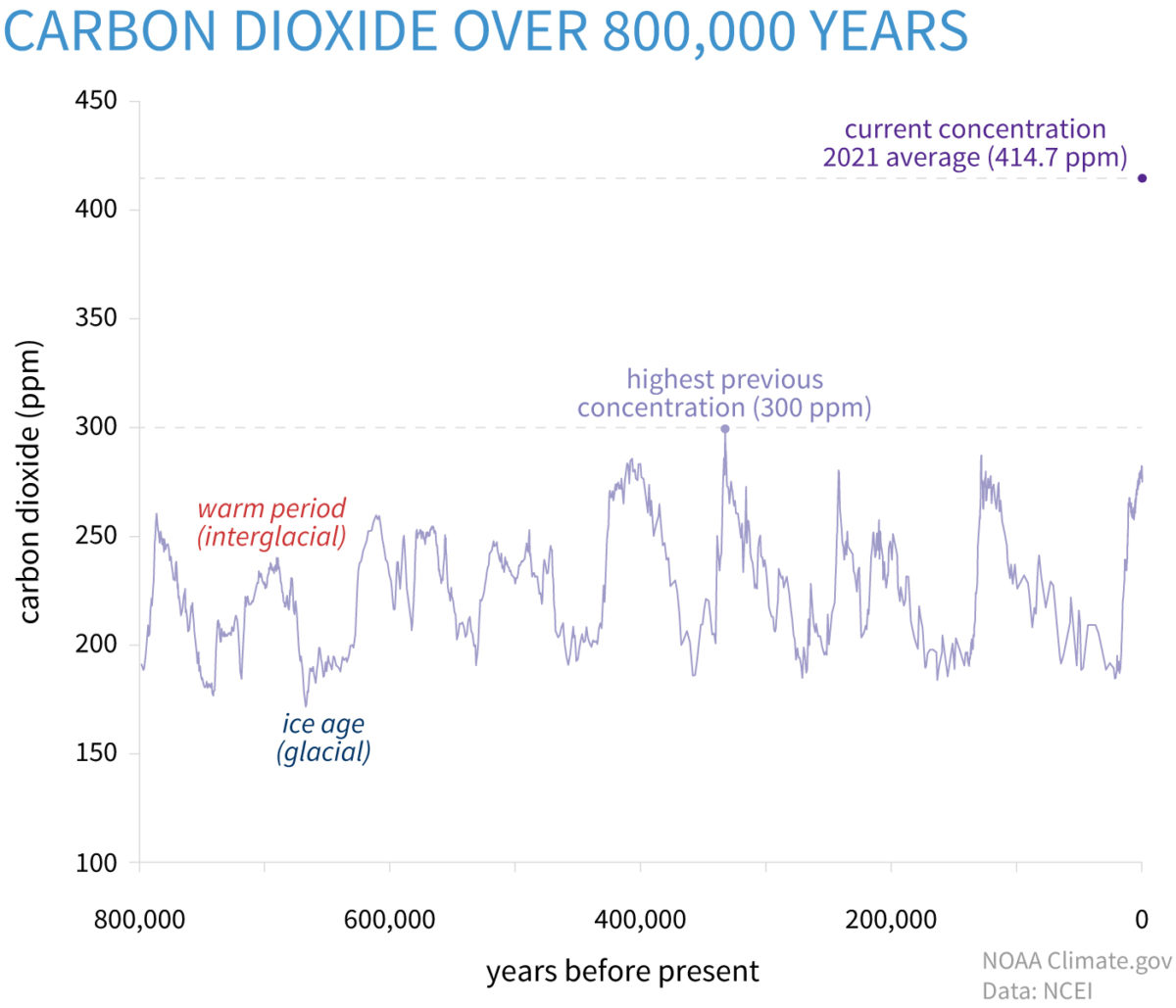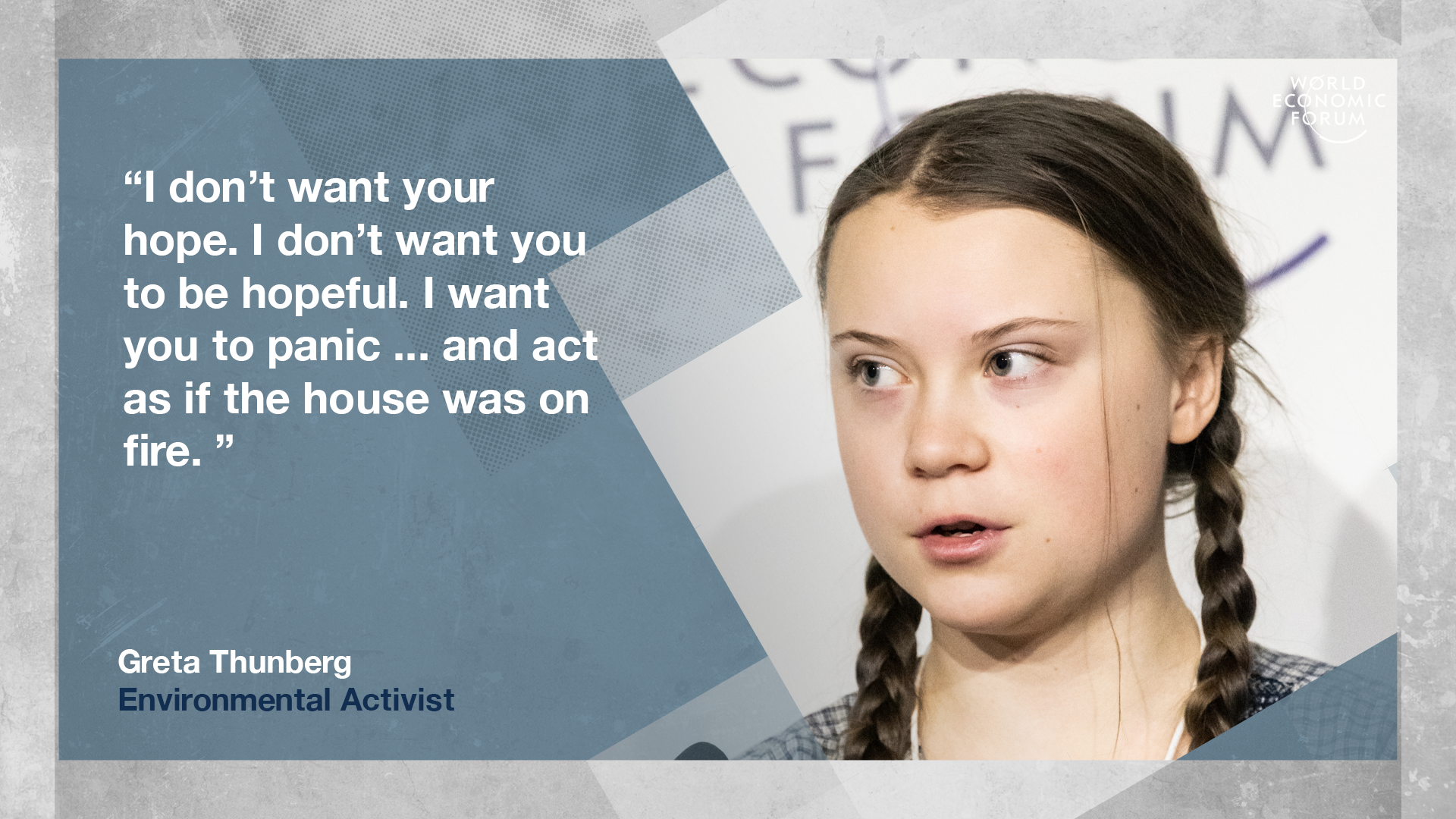Proof that humans caused rapid global warming

US National Oceanic and Atmospheric Agency summarizes evidence that humans are responsible for huge CO₂ emissions driving rapid global warming.
Rock solid evidence leaves no other explanations able to explain the observations. Humans caused the problem. Humans should be able to do something about it!

By Rebecca Lindsey, October 12, 2022 on Climate Q&A
How do we know the build-up of carbon dioxide in the atmosphere is caused by humans?
The most basic reason is that fossil fuels—the equivalent of millions of years of plant growth—are the only source of carbon dioxide large enough to raise atmospheric carbon dioxide amounts as high and as quickly as they have risen. The increase between the year 1800 and today is 70% larger than the increase that occurred when Earth climbed out of the last ice age between 17,500 and 11,500 years ago, and it occurred 100-200 times faster.
In addition, fossil fuels are the only source of carbon consistent with the isotopic fingerprint of the carbon present in today’s atmosphere. That analysis indicates it must be coming from terrestrial plant matter, and it must be very, very old. These and other lines of evidence leave no doubt that fossil fuels are the primary source of the carbon dioxide building up in Earth’s atmosphere.
Read the complete article….
Carbon dioxide over 800,000 years
The featured image is from the article above. It shows the variation in atmospheric CO2 concentrations over the last 800,000 years of time. The caption explains:
Global atmospheric carbon dioxide (CO2) in parts per million (ppm) for the past 800,000 years based on ice-core data (purple line) compared to 2021 concentration (dark purple dot). The peaks and valleys in the line track ice ages (low CO2) and warmer interglacials (higher CO2). Throughout that time, CO2 was never higher than 300 ppm (light purple dot, between 300,000 and 400,000 years ago). The increase over the last 60 years is 100 times faster than previous natural increases. [my emphasis] In fact, on the geologic time scale, the increase from the end of the last ice age to the present looks virtually instantaneous. Graph by NOAA Climate.gov based on data from Lüthi, et al., 2008, via NOAA NCEI Paleoclimatology Program.
Also from Climate Q&A, see two related articles: What evidence exists that Earth is warming and that humans are the main cause?; and Which emits more carbon dioxide: volcanoes or human activities?
Why is this important?
Many articles on Climate Sentinel News provide evidence that global temperatures are already reaching very dangerous thresholds. If we do not stop human generated/activated carbon emissions, positive feedbacks driven by the increasing temperatures will increase natural greenhouse gas (GHG) emissions fast enough to keep temperatures rising even if we completely stop human GHG emissions (e.g., the warming process will run away – see Climate Crisis! The only issue that matters, Tripping down the road to Earth’s Hothouse Hell and Global Mass Extinction, and Apocalypse will come if global warming is not stopped.
If we do not stop global warming, there is probably enough carbon readily available for emissions in soil, permafrost, and biomass to drive temperatures high enough to exterminate most complex life on Earth (the 6th global mass extinction).
What can we do about it?
Because the climate crisis is a global threat for the whole of humanity, there is very little a single human can do in isolation to stop and turn around the warming process. Effective action has to be guided and managed at international, national and state levels before individual actions become effective. Consequently, the single most effective things individual people can do is to elect representatives to government who will respond actively and seriously to ensure that our governments are taking appropriate and effective actions.
Where governments are concerned, state governments probably have the most power to directly manage and control responses to climate change through their controls of environmental regulations, planning and permitting. In Australia, Victorians will have an opportunity around a month from now (on on 26 November 2022) to elect members for the next Parliament of Victoria. All 88 seats in the Legislative Assembly (lower house) and all 40 seats in the Legislative Council (upper house) will be up for election. The most important thing you can do to respond to the climate crisis is to elect upper and lower house representatives committed to effective action on the climate crisis.
Voting in Australia’s preferential voting system requires careful consideration if you care about the result.
Applying your decision to preferential voting on the ballot
If you believe that our present Victorian Labor government will govern in your interests rather than their corporate and union patrons in the fossil fuel and related industries, then go with the flow and don’t concern yourself with the likely consequences of going down their fossil fueled road towards runaway global warming. On the other hand, if you think it is better to work for a sustainable future where your children and their children can hope for long and happy lives, Vote Climate One can help you elect a government that will actively lead and support this work.
In general, we think a minority government led by Labor, where the balance of power is held by Greens and pro-climate community independents will give us the parliamentary representation that will give us the best outcome.
The trouble with party led majority governments is that the large parties are all disciplined to follow a party line. All too often super wealthy special interest patrons including non-citizen overseas entities strongly influence parties via large ‘donations’ and campaign support. Far better to give the last word on parliamentary decisions to MPs owing allegiance to the citizens who elected them than to people constrained to follow party disciplines..


Vote Climate One was formed for the specific purpose of studying and ranking all political parties and independent candidates on their policies and promises relating to climate and related environmental issues. What are they committed to do, and can you trust them to keep to their commitments. This is expressed in our Climate Lens Traffic Light Assessment process. (The results and their presentation are still being processed for the Victorian Election as this is being written).

Our Climate Sentinel News provides access to factual evidence about the growing climate crisis to support your thinking; and our Traffic Light Voting System gives you easy to use factual evidence developed through our assessment process about where each candidate in your electorate ranks in relation to their commitment to prioritize action on the climate emergency. This should make it easier to decide your voting preferences before confronting a long ballot paper in the voting booth. We do the work so you can easily cope with Victoria’s complex party-based preferencing to plan your voting before you enter the booth.
We need to turn away from the the Apocalypse on the road to hothouse hell, and we won’t do this by continuing with business as usual!
It seems to have taken the clear thinking of Greta Thunberg, a 16 year-old girl who concluded school was pointless as long as humans continued their blind ‘business as usual’ rush towards extinction.

In other words: Wake up! Smell the smoke! See the grimly frightful reality, and fight the fire that is burning up our only planet so we can give our offspring a hopeful future. This is the only issue that matters. Even the IPCC’s hyperconservative Sixth Assessment Report that looks at climate change’s global and regional impacts on ecosystems, biodiversity, and human communities makes it clear we are headed for an existential climate catastrophe if we don’t stop the warming process.
In Greta’s words, “even a small child can understand [this]”. People hope for their children’s futures. She doesn’t want your hopium. She wants you to rationally panic enough to wake up, pay attention to reality, and fight the fire…. so our offspring can have some hope for their future. As individuals, our most effective fire axe is to elect the right people to government who can lead and coordinate the fire fight.
